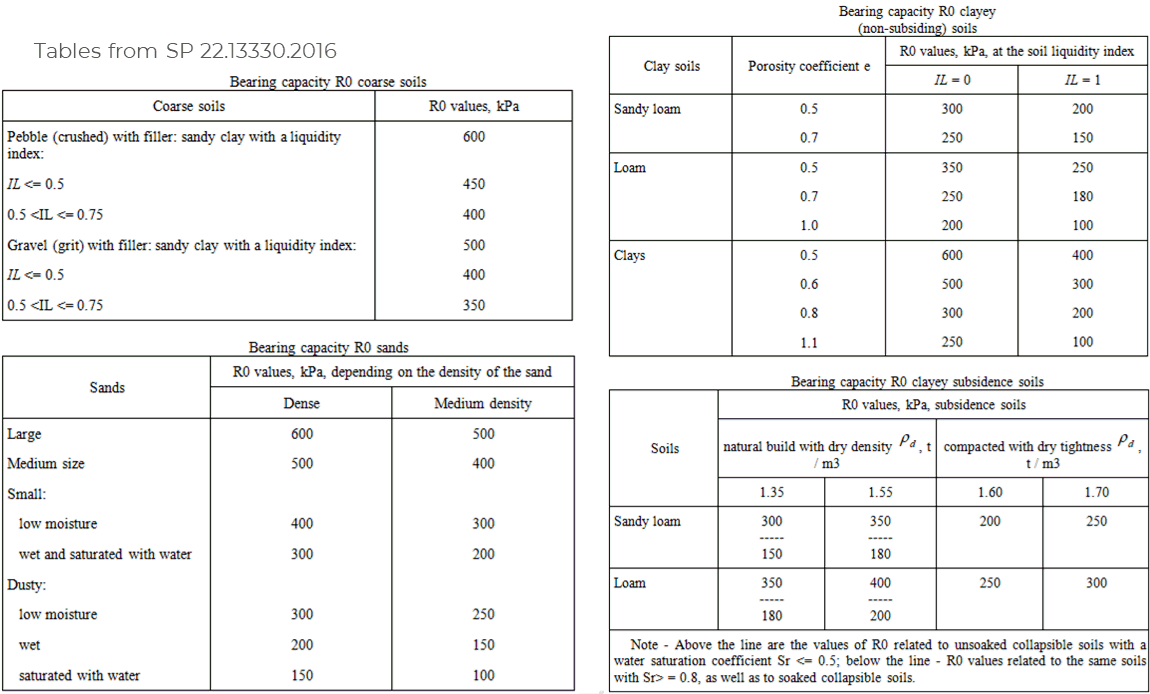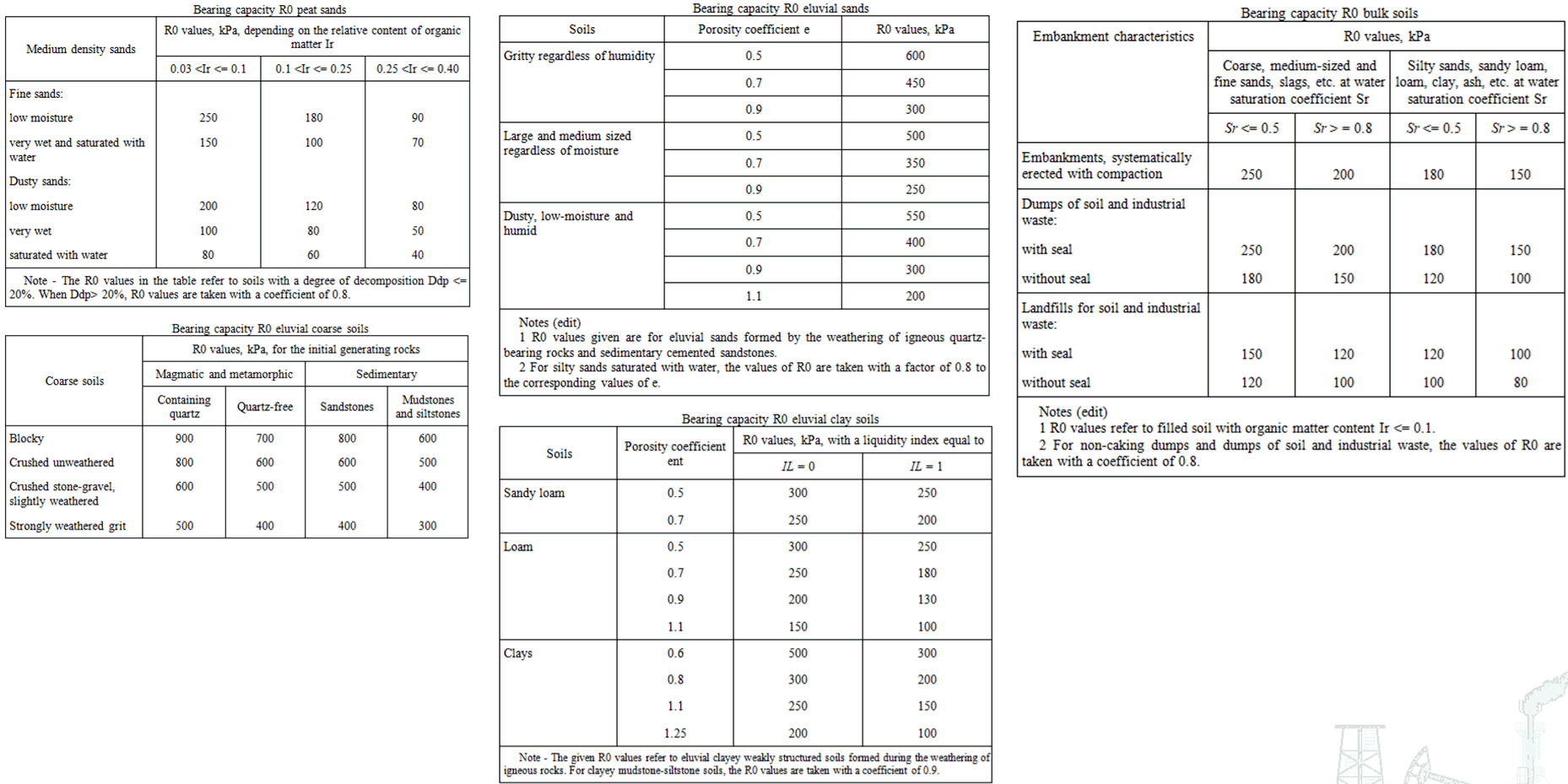


The "SOILS" database contains various physical and mechanical soil properties. Please see the Buried Pipeline Model in START-PROF Software for details
When analyzing heating networks (RD 10-400-01) using SN 41–105–2002 section 4.41 [2], backfill should be only sand, so physical and mechanical properties of soils 01 and 02 can be used. If the trench is filled partially with sand (150 mm above and below, according to section 4.40 [2]), and partially with, for example, loam, the input soil should have the physical and mechanical properties of sand, but volume weight for safety margins should be that for loam 04.
When analyzing district networks (SNIP 2.05.06-85) soil physical and mechanical properties should be determined based on sample analysis, or some other methods, and added to the START-PROF database.
Custom soil data can be entered starting with number 16. Soil type numbers 01-15 are input by the START-PROF design team and cannot be edited.
Soil properties used in the analysis are saved in a "ctp" file. If a file containing soils not present in the database is opened, you will be asked if you would like to add them to the database. If the soils already exist but have different properties in the database and the opened file, you can: update soil properties in the database, add the soil to the database under a new name, or delete the soil used in the file and use the database data.
In order to save the new soils when reinstalling START-PROF or installing a new version, there are two options:
1) save the sqlite3 files and put them back into the database folder after installation (usually C:\Program Files (x86)\Common Files\STARTPR\Base). But there is a risk that new versions or releases will not be able to work with old database files
2) create a START-PROF project file in which to specify pipes from all new soils that you want to save. And then after installing the new version, just open this file and import soils from it into the database of the new version

Database structure:
No. |
Name |
Description |
|
1 |
Code |
Soil type number. Soil type numbers 01-15 are input by the START-PROF design team and cannot be edited. Custom data can be entered starting with number 16 |
|
2 |
Soil type |
One of the following soil types must be selected: sand, sandy loam, loam, clay, peat. These data are used for selecting correlations approximating experimental data on forming a natural balance [1]. |
|
3 |
Description |
Free text format |
|
4 |
Deformation factor, E |
Geotechnical testing data for construction site soil samples must be used |
1-2000 kgf/cm2 |
5 |
Poisson's ratio (transverse deformation factor), ν |
0.01-0.5 |
|
6 |
Void Ratio, e |
0.2-20 or 0 e = Vv/Vs = (γs-γd)/γd = n/(1-n), Vv - volume of the void space, Vs - volume of the solids, γs - particle unit weight, γd - dry bulk unit weight, n - porosity Used only for determining flooded soil properties. If the value is 0, this soil cannot be used with flooded elements |
|
7 |
Internal friction angle, φ |
4-60 degrees |
|
8 |
Soil unit weight, γ |
500-4000 kgf/m3 |
|
9 |
Soil particle unit weight, γs |
500-4000 kgf/m3 or 0 Soil particle specific weight γs used for flooded elements in calculating soil specific weight in suspended state, using γsb = (γs-γw)/(1+e). γw is the water unit weight. If the value is 0, this soil cannot be used with flooded elements |
|
10 |
Soil cohesion, c |
0-1.0 kgf/cm2 |
|
11 |
Carrying capacity Rs |
0.1-1200 kgf/cm2 |
|
12 |
Longitudinal displacement resistance factor, cx0 |
>50000 kgf/m3 or 0 Soil resistance to longitudinal displacement factor is obtained from processing experimental data. If the value is 0, elastic-plastic soil model is used |
|




Service > Databases > Soils
1. Aynbinder A.B., Kamerstein A.G. Transmission pipelines stress and buckling analysi. Мoscow, 1982
2. SP 41–105–2002. Design and building of buried heating networks in polyurethane insulation code, Мoscow, 2003